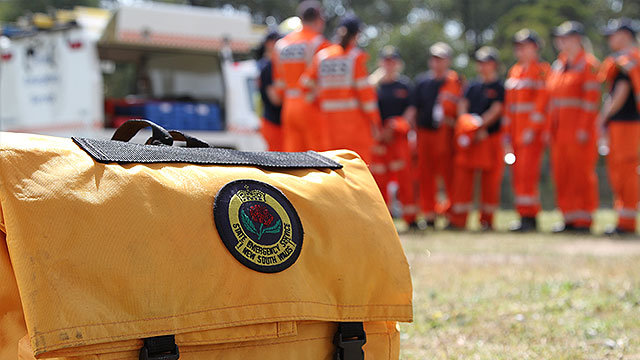NSW State Emergency Service, NSW, Australia
New South Wales State Emergency Service (NSW SES) is an emergency response service made up of approximately 10,000 volunteers, with 228 units throughout the state of New South Wales in Australia. Flood, storm and tsunami operations are the Service’s major responsibilities, with volunteers responding to over 15,700 storm-related call-outs during 2009–10.

"Recognizing the way that a radio operates and its limitations in our specific situations helps us to use it more effectively. That can have huge implications when getting a message through first time could mean the difference between life and death."
Situation
With the ultimate aim of maintaining and strengthening the safety of its volunteers and of the public and property it protects, NSW SES needed to properly assess how its volunteers used their emergency radio equipment in the field.
Specifically, NSW SES needed to learn how it could further improve the current radio communication practices of its 10,000 public safety volunteers throughout the state.
Response
Tait Communications, in partnership with researchers at the New Zealand Institute of Language, Brain and Behaviour, worked closely with NSW SES to plan and design an Advanced Voice Communications Assessment.
After in-depth study of NSW SES requirements, Tait Communications experts and NZILBB researchers travelled to Sydney for a two-day Assessment to work directly alongside SES volunteers on location at the Service's North Sydney headquarters.
The Assessment was divided into three realistic SES-specific scenarios, using chainsaws, vehicle sirens and a flood-boat on Sydney Harbour. Each scenario was carefully monitored and involved NSW SES volunteers using radio equipment to transmit and receive voice messages, which were recorded for later analysis..
After an intense two days of monitoring, the research team commenced a review of the captured data, combined their observations and prepared a thorough assessment report for NSW SES, with recommendations for improvements based on their findings.
Outcomes
The Assessment Report provided by Tait Communications and NZILBB has helped NSW SES to clearly identify ways to improve volunteers' in-field communication.
Pat Clague, Manager of Communications, NSW SES, says: "What we received as a result of the expert assessment was a very clear picture of how we can improve our current radio communications practices.
"The key finding for us was a need to develop greater consistency around our radio usage through the development of standardized training programs and practice scenarios, to help up-skill less-experienced radio users.
"Educating our volunteers about the differences between analog and digital radio technology is one way to help them understand and interact with the equipment they use every day in more efficient and knowledgeable ways.
"Recognizing the way that a radio operates and its limitations in our specific situations helps us to use it more effectively. That can have huge implications when getting a message through first time could mean the difference between life and death."
Other client stories you may be interested in
%20for%20Whats%20New,%20Discover,%20Bottom%20Cards%20Listing/Case%20Studies/CFS-440x270.jpg?width=440&height=270&name=CFS-440x270.jpg) Country Fire Service - SA Australia
Country Fire Service - SA Australia
The South Australian Country Fire Service (CFS) serves communities through dedicated volunteers delivering professional fire and rescue services to outer metropolitan, regional and rural South Australia.
%20for%20Whats%20New,%20Discover,%20Bottom%20Cards%20Listing/Case%20Studies/FESA-440x270.jpg?width=440&height=270&name=FESA-440x270.jpg) Fire and Emergency Services Authority - WA Australia
Fire and Emergency Services Authority - WA Australia
Fire and Emergency Services Authority of Western Australia bring together the Fire and Rescue Service, Bush Fire Service, State Emergency Service, Volunteer Marine Rescue Services, Emergency Management Services, Community Safety Services. It has 30,000 emergency service volunteers and 900 career fire fighters.
%20for%20Whats%20New,%20Discover,%20Bottom%20Cards%20Listing/Case%20Studies/CFA-440x270.jpg?width=440&height=270&name=CFA-440x270.jpg) Country Fire Authority, VIC
Country Fire Authority, VIC
See how Tait worked side-by-side with the Country Fire Authority to create a customised communications solution that would meet the demanding mission-critical requirements of CFA firefighters, deliver long-term value for money, and provide the flexibility to adapt to future needs.